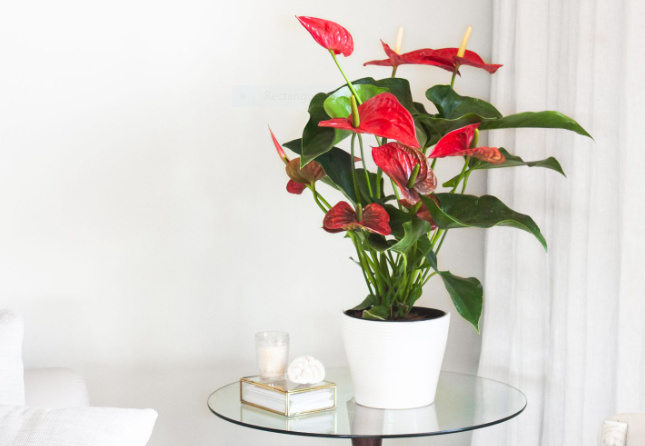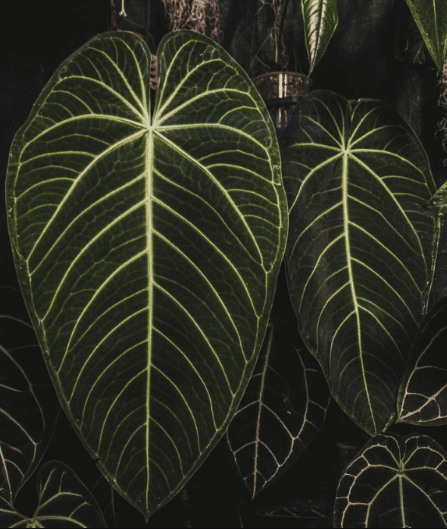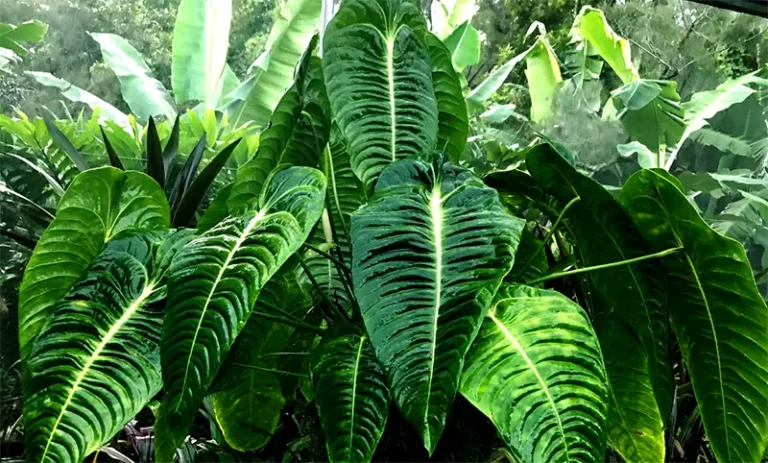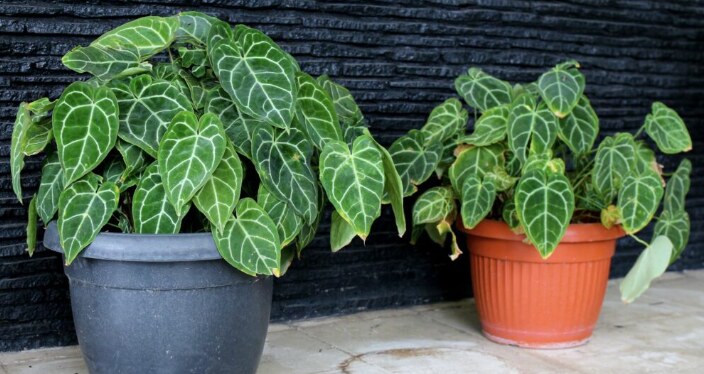Anthurium Pallidiflorum: Origin, Care, and Propagation
Anthurium Pallidiflorum, also commonly known as Strap Leaf Anthurium, is a beautiful, rare houseplant known for its unique leaves and jungly appearance. The plant produces velvety, dark green leaves with silvery veins that give your living space a tropical vibe.
Anthurium pallidiflorum grows well when properly taken care of. In this guide, we will briefly discuss the origin, growth pattern, care requirements, and propagation methods that you can follow to keep your Strap Leaf Anthurium thriving.
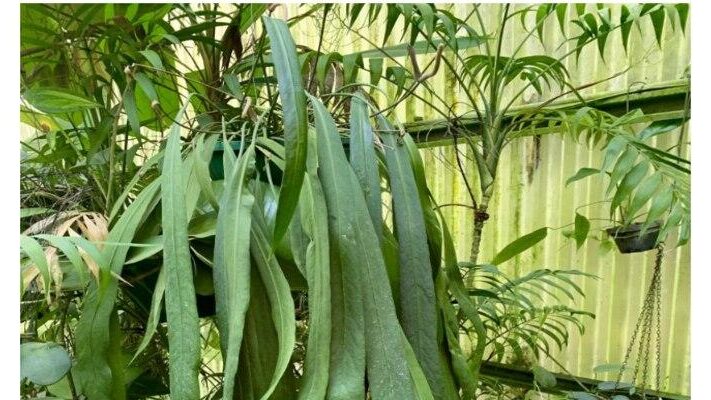
What is Anthurium Pallidiflorum? Origin and Appearance
Origin:
Anthurium pallidiflorum is a species of flowering plants that belongs the Araceae family. The plant is native to Colombia and Ecuador and belongs to the Porphyrochitonium section of Anthuriums. It grows well in tropical rainforests at high latitudes between 800 to 1500 meters.
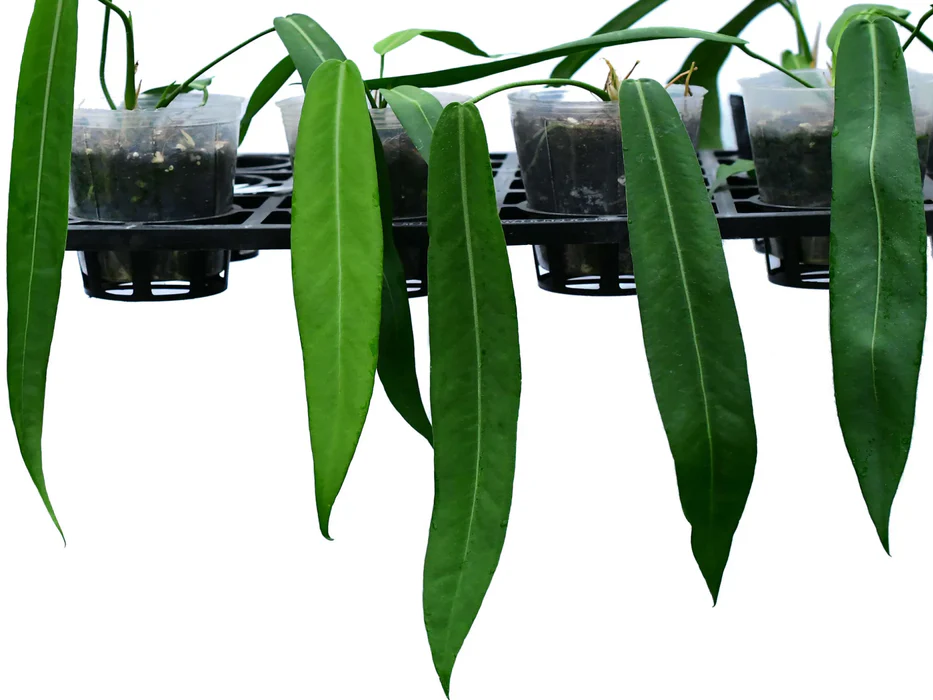
Appearance of Strap Leaf Anthurium:
The Strap Leaf Anthurium leaves can reach 20-26 inches long and 6-10 inches wide. The leaves are long and slender and are shiny with a slightly velvety texture when shown in light.
The branches of Strap Leaf Anthurium are shorter and bent due to long and heavy leaves. Its leaves look like green laces and show amazing shimmer when exposed to sunlight. Both young and mature leaves of this species are similar in shape, but the color of immature leaves is lighter and grow deeper as their size increases.
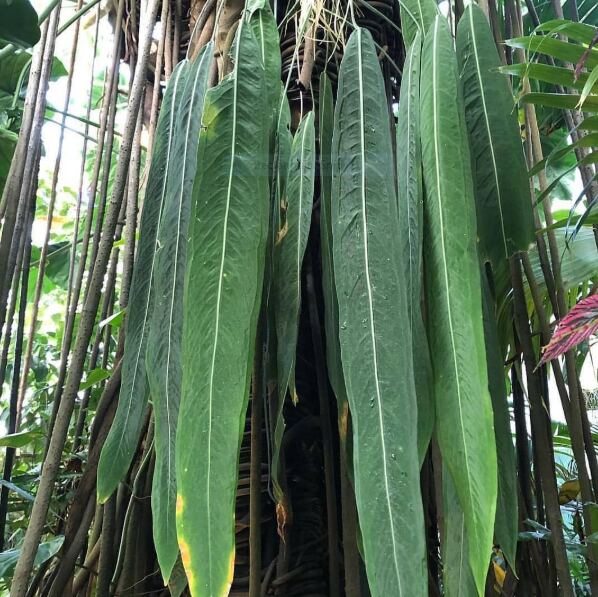
Similarly, its flowers are 1-2 inches across with 6-10 yellowish-green petals.
The International Union for the Conservation of Nature said that Anthurium pallidiflorum is the most diminutive species, but it still faces the risk of habitat loss. So, you will be lucky to find this strap leaf anthurium or its small cuttings.
How to Care for Your Anthurium Pallidiflorum (Strap Leaf Anthurium)?
Caring for your Anthurium Pallidiflorum is quite easy. By meeting the following requirements, you can keep it thriving in your indoor garden.
1. Water Requirements: How Often Should You Water Your Anthurium Pallidiflorum?
Water your Anthurium Pallidiflorum once a week. It thrives happily in the environment with proper watering. Too much or too little watering has adverse effects on its growth.
Before watering:
If you want optimal growth, a moisture meter is your best tool. This tool can accurately measure the moisture content of the soil, helping you avoid over or under-watering and ensuring your plant’s health.
2. Which Type of Soil Is the Best for Your Strap Leaf Anthurium?
This tropical plant loves to grow in high organic soil, peat-based or sphagnum moss. You can choose a potting mix, such as:
Prefer well-drained soil because it’s excellent moisture retention quality makes your plant happy and healthy.
3. Lighting Requirements: How Much Sunlight Does Your Strap Leaf Anthurium Need?
For Pallidiflorum growth optimal growth, medium light is the best option. Both direct and dim lights are harmful to your plant. If you want to place this plant in your living place, prefer an indirect or filtered light location.
You need to know that:
4. Anthurium Pallidiflorum Temperature Requirements
Naturally, this tropical plant loves to flourish in a warm environment. An indoor cozy setup is the best place for your plant’s happiness.
To keep it thriving indoors:
5. Strap Leaf Anthurium Humidity Requirements
Anthurium Pallidiflorum, aka Strap Leaf Anthurium, loves high humidity. This plant needs 40 to 60 percent humidity to survive indoors. If this is difficult to maintain, a humidifier is the best solution for your Anthurium.
Here are some other cheap options which include:
- Regular Misting: This process is time-consuming but helpful.
- Pebbles Tray: Fill a tray with pebbles or stones and add water. Place it under your plant’s pot. When the water evaporates, it will create humidity surrounding your Anthurium pallidiflorum.
- Grouping: Grouping with other plants forms a mini humid climate, which makes your anthurium happy again.
6. Fertilizer Requirements for Anthurium Pallidiflorum
During the growing season,
7. Anthurium Pallidiflorum Pot Size Requirements
Pretty Anthurium Pallidiflorum likes a little bit of sunlight to thrive in its pot.
8. When to Repot Your Anthurium Pallidiflorum?
Repot your Anthurium Pallidiflorum after 2 to 3 years. Repotting is the best option to revive their stunted growth and keep them happy.
The best time for repotting your Strap Leaf Anthurium is when you see these signs:
9. Pruning Guide for Your Anthurium Pallidiflorum
Pruning is the best way to keep your Anthurium Pallidiflorum in shape. First, you must understand how and why you must prune your plant. Follow these steps for the pruning of Anthurium Pallidiflorum:
The growing season is the ideal time for pruning of anthurium pallidiflorum.
10. When and How to Propagate Your Strap Leaf Anthurium?
Do you want to grow your plant collection? Propagation is an effective way to get new plants from previous ones. The growing season is the best time for propagation, as this gives cuttings maximum time to grow into firm, healthy young plants.
Strap Leaf Anthurium can be propagated through Root Balls and Stem Cuttings. Let’s discuss both of these methods below.
1. Propagation Through Root Balls:
When you see the signs of overcrowding and roots starts poking out of the drainage holes, separate the divisions and pot them in new pots. Here is how you can do this:
2. Propagation Through Stem Cuttings:
For propagating your Strap Leaf Anthurium through stem cuttings, follow the steps below:
This propagation process is the best and safest one for Anthurium Pallidiflorum. You did not harm any stems, even if there is no root, because you have not taken any stem cuttings.
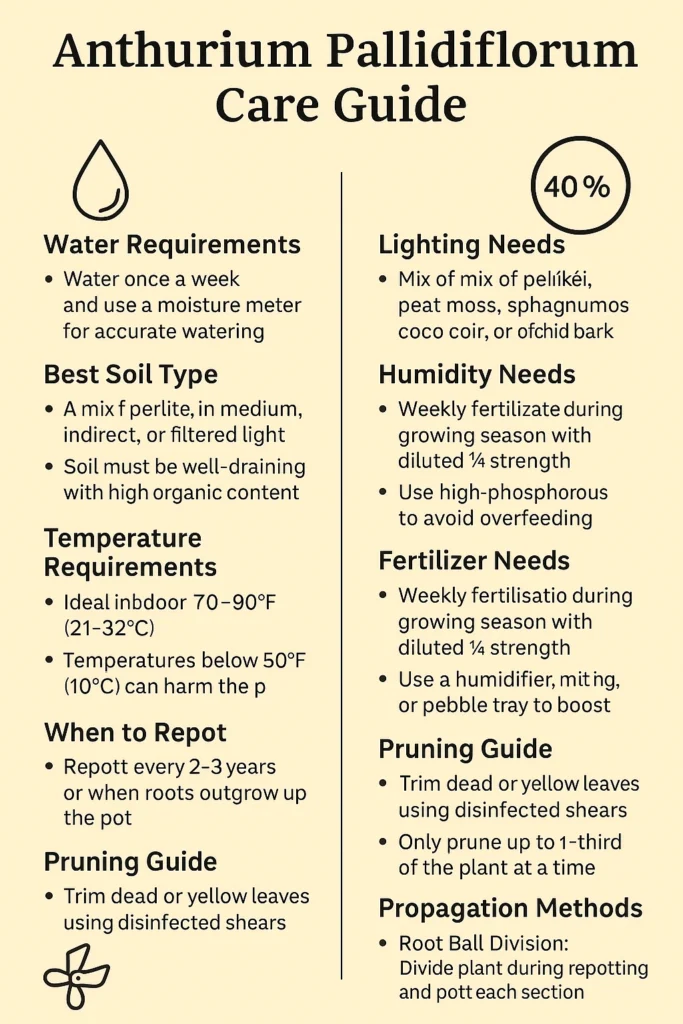
Common Problems of Anthurium Pallidiflorum
1. Sunburn
If your plant stays in afternoon sunlight for an extended period, it can cause sunburn. This plant cannot tolerate direct sunlight, so always prefer a shaded area for your anthurium pallidiflorum. If you notice any burned leaves, then immediately trim that part.
2. Root rot
Soft and mushy roots indicate that your plant is suffering from root rot. If you see any unhealthy roots, remove them as soon as possible. Root rot can cause leaves to turn yellow and wilt.
3. Brown Leaf Tips
Brown leaf tips indicate that your strap leaf Anthurium is experiencing problems with under- or overwatering. Check the soil before watering. Remove all the dead and brown leaf tips to maintain its stunning appearance.
4. Yellow leaves
Yellow leaves indicate that your Anthurium Pallidiflorum indicates that your plant is facing the problem of light stress. Always try to place your plant in indirect or bright sunlight. Remove all the dead and yellow leaves to make your plant happy again.
5. Pests Attack
Spider mites, aphids, and mealybugs are common pests that attack your Strap Leaf Anthurium. You can recover your plant by using neem oil or insecticidal soap.
Also Check What is Anthurium Veitchii?
FAQS
Is Anthurium Pallidiflorum toxic or not?
Like other Anthuriums, the Strap Leaf Anthurium is also toxic to cats and dogs. It contains calcium oxalate, which is also harmful to humans and pets.
Does Strap Leaf Anthurium purify the air?
Yes, Anthurium Pallidiflorum acts as an air purifier and removes all the toxic substances from the air.
Conclusion
Anthurium Pallidiflorum Aka Strap Leaf Anthurium is a unique tropical plant with velvety leaves. The plant is easy to care for. It requires appropriate indirect sunlight, regular watering, enough humidity, warm temperatures, and fertilizers during its growing season to thrive.
You can grow its collection by propagating it in your garden. Propagation through root balls and stem cuttings are the commonly used methods to produce more copies.

About Author
Hi, I’m Emily Davis, a passionate tropical plant enthusiast dedicated to sharing knowledge and expertise with plant lovers. Through his blog, I will provide guides, tips, and tricks for caring for tropical houseplants species like Alocasia, Anthurium, Calathea, Philodendron, Begonia, and many more that will help readers bring a touch of paradise into their own homes. With a deep love for the vibrant colors and lush textures of tropical flora, I’m committed to inspiring others to cultivate their own tropical oasis.

